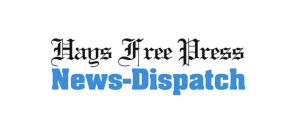By Moses Leos III
Gathering stakeholder input on Kyle’s current and future economic climate was the first step in the city’s attempt to develop an updated Economic Development Strategic Plan.
That was the goal Thursday during the first of three Economic Development Summits at Kyle City Hall. A professional group led the process of gathering stakeholders’ feedbacks on the strengths, weaknesses, opportunities and threats to Kyle’s economy.
Natelson Dale Group Inc., retained by the city in 2014, will hold a series of summit meetings to gather input from stakeholders. According to Kyle Economic Development Director Diana Torres, stakeholder input is imperative to keep the city and interested parties on the same page.
“If we have a vision and we haven’t brought on or signed in (stakeholders) on it, they are not going to be trying to go in the same direction as us,” Torres said. “We are going to be fighting against each other and not getting anything accomplished.”
The company will be charged with updating the city’s current plan, which was crafted in 2007.
Roger Dale, principal at Natelson Dale, said the group will compile information from the first meeting, then conduct an independent analysis of the market opportunities for the larger region. Natelson Dale would then compare that to what the city has to offer in terms of housing, office and industrial development.
A set of recommendations on what the community can do to market Kyle and how it could attract development is expected to be presented at the stakeholder meeting in June.
Plans should be completed by August.
In a presentation to stakeholders, Dale said the one of the city’s strengths lies in its location on the interstate. He said much of the growth on the IH-35 corridor would converge “south from Austin and north from San Antonio” into Kyle.
According to Dale, developing a strategic plan will help the city be “in a better position to be selective about the types of future growth that happens here.”
Other strengths are the city’s downtown and its affordable housing market.
But diversifying the economy is a challenge the city faces. Adding more office space was a key point, as is alleviating traffic congestion. Dale said congestion could “work against quality growth if it’s not properly addressed.”
Finding a way to increase the number of people living and working in Kyle is also important.
According to Census data, more than 18,000 people living in Kyle commute outside of the city.
For stakeholders, the views on what the city’s strengths, weaknesses, opportunity and threats varied.
But many believed improving the city’s approach to business is a key factor. Some stakeholders said previous city councils and the previous city manager have not been “business friendly.”
The consensus, though, was the city is steadily improving its stance.
“The group was optimistic about Kyle’s future, based on current leadership and the council and city staff management,” Dale said.
Balancing the tax base was a concern for some. A few stakeholders in one group said further funding for economic development is important. That extends to incentivizing businesses, to possibly creating an Economic Development Corporation.
Torres said creating an EDC has been a topic for a “number of years.” But she said the debate continues to be whether it’s feasible to do so. An EDC is funded with 5¢ of property taxes. That five cents is currently allotted to keep property taxes down, so funding an EDC would require voter approval.
Having a variety of housing options, including adding executive level homes, was an idea to help spur economic development.
Ultimately, Dale stressed stakeholders hold the key to the city’s growth.
“Our job is not to define the city’s vision,” Dale said. “We are there to help the stakeholders discuss that and support the process of working toward vision.”










